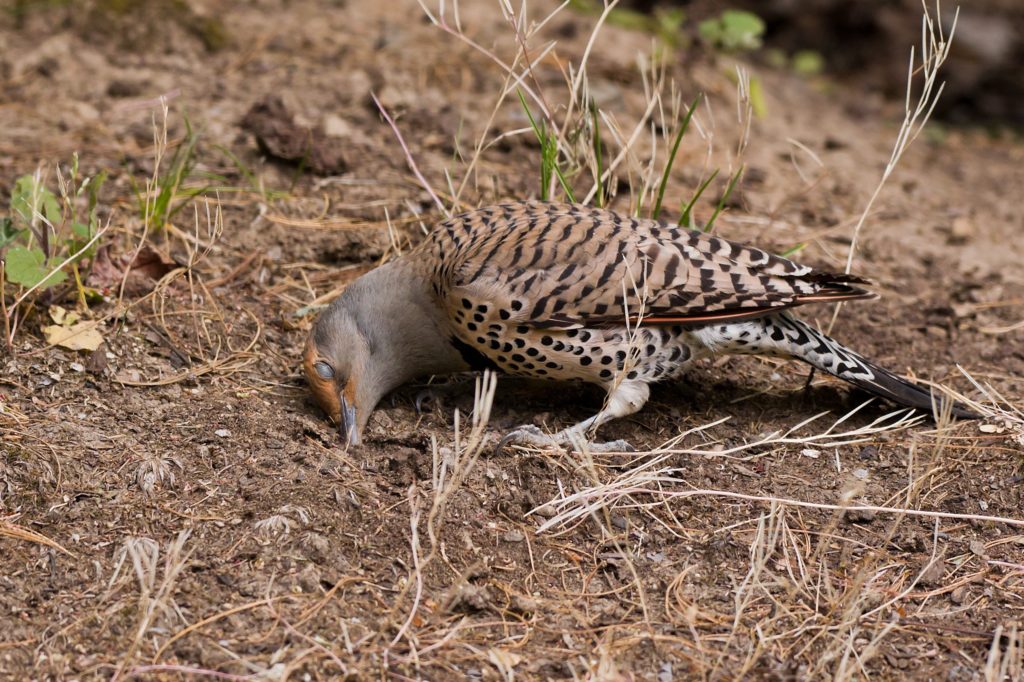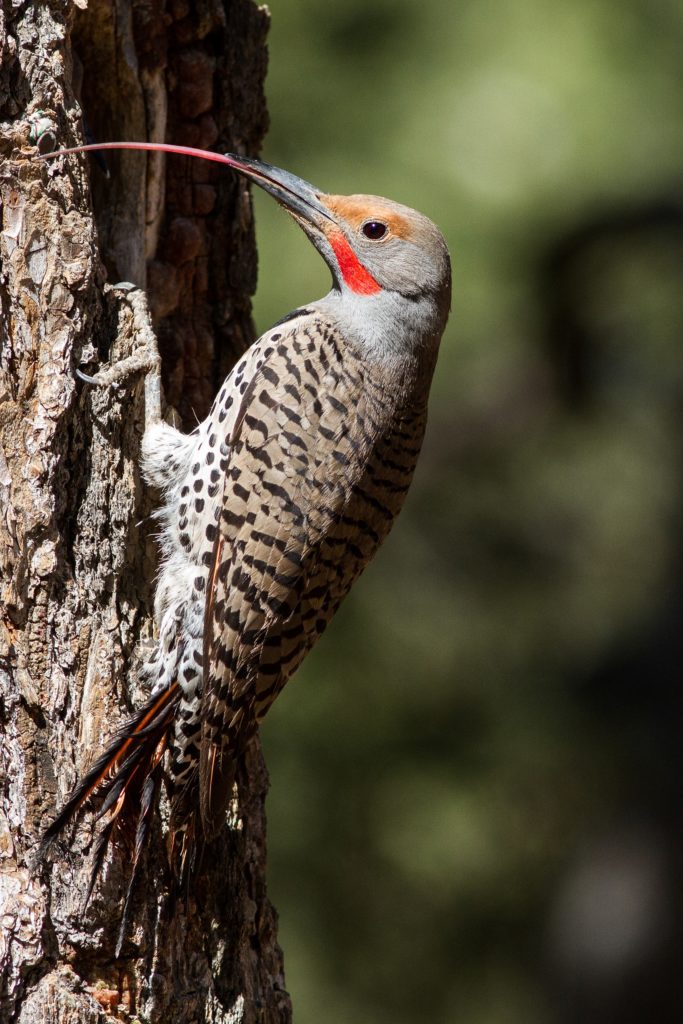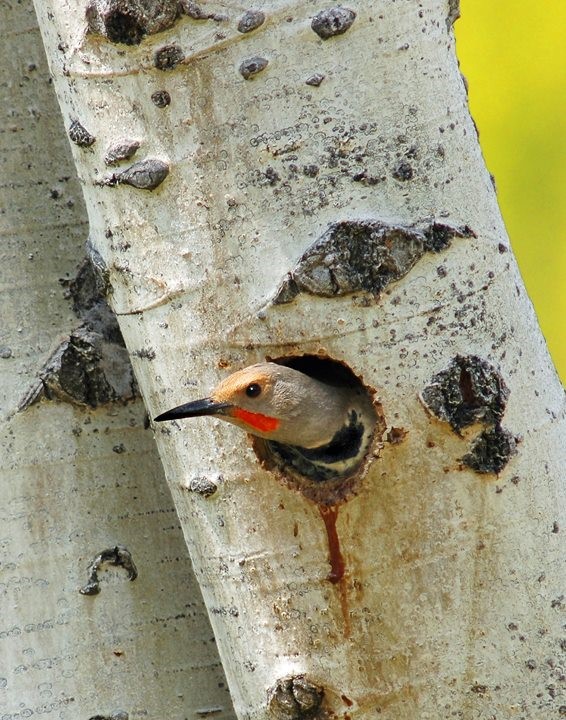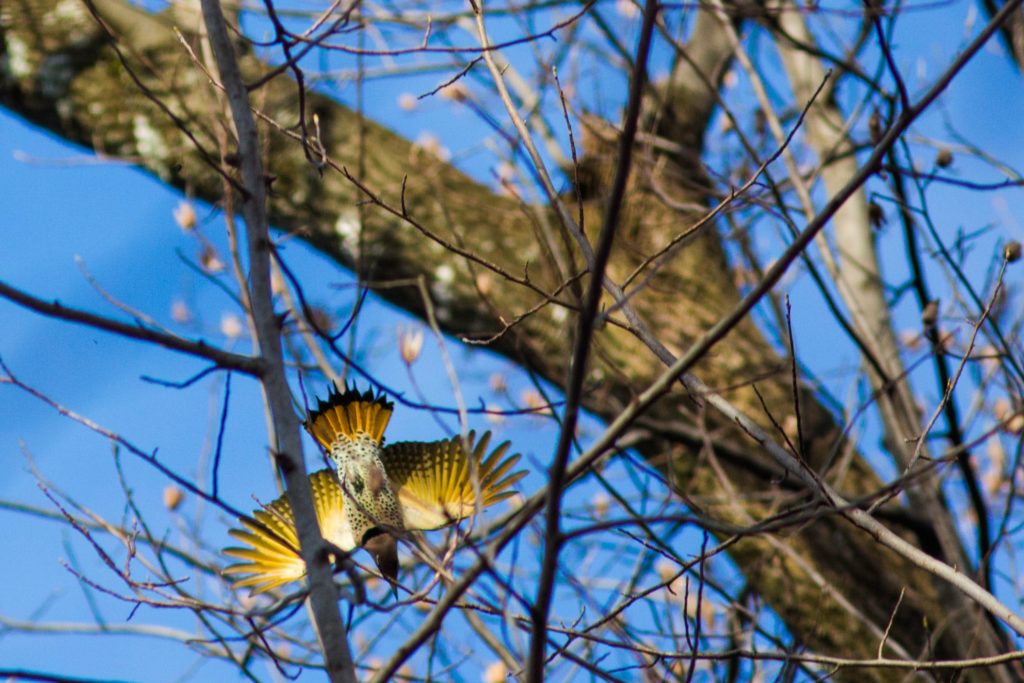Northern Flicker: Considerations for Tree Care Providers in Western North America
by Gillian Martin

The Northern Flicker is the second largest, most widespread and migratory woodpecker in North America (except for Hawaii which has no woodpeckers). Unlike most other woodpeckers, its coloration is suited for its ground foraging habits. An untrained eye would find little to suggest this bird is a woodpecker, and even less likely to guess its remarkable adaptions for its specialized role. A young boy fascinated by all things ‘gross’ would light up like a Christmas tree to discover the Flicker’s impressive and ‘eeky’ abilities.

A third eyelid shields against flying debris.
Anthony Lukich
The flicker is a primary predator of underground ants, eating more than any other North American bird. Stomach contents suggest a thousand a day. Its diet, however, includes many other arthropods, including those found in trees (especially those with decay), and even in cow patties. In fall and winter, fruit and large seeds are preferred.

Ken Griffiths
Its barbed tongue protrudes almost 2 inches from the bill, aided by elastic bony rods to which it is attached. These rods wrap and rest around the back of the skull, enter the right nostril and cavity of the upper jaw. When the bird deploys its tongue, the rods catapult it forward. When the bill is shut, they swing back into place. To capture many ants at a time, the flicker’s large salivary gland excretes sticky mucous which covers the tongue as it shoots forward.

Tom Koerner USFSW Wikimedia Commons
Unfortunately, the bird’s decurved bill is best suited to be applied as a pickax rather than a chisel. This makes it less ideal for excavating in wood. Consequently, the flicker frequently reuses old, excavated cavities, easily excavates in saguaro, and chooses aspen (when available) because of the tree’s propensity for heartwood rot. About 14 days are required for the work. About sixty or so cavity-nesting birds (as well as many other wildlife) nest and seek protection in the abandoned cavities of woodpeckers. The family Picidae are vital carpenters of the bird world.

US Forest Service Wikimedia Commons
Where dead snags are available in spring, the Flicker can be found in montane forests, isolated woodlands in the desert, city parks and urban neighborhoods. Breeding time varies by region but ranges from February through July. Its nest may be as low as six feet above ground. If you approach a tree cavity about 3 inches in diameter and detect the sound of bees inside, you may be hearing the Flicker’s nestlings attempting to scare you away. When possible, delaying tree care until they have left is the best practice.

Wendy Niro
The Flicker is one of the most vocal woodpeckers. The bird is fond of announcing itself with a kee’er or kee’ew. Once recognized, its Wicka and Peah calls are also unmistakable.

Melissa McMasters Wikimedia Commons
The species is steadily declining in North America. Construction reduces ant nests and simultaneously attracts the non-native European Starling which outcompetes Flickers for nest sites in some regions. But arborists can mitigate for the greatest impact on the Flicker and other species that rely on its nest cavities by safely managing snags and live trees with heart rot, when possible. Though not well substantiated, pesticides on golf courses, agricultural fields and urban lawns are thought to be a contributing factor.


Connect
Connect with us on the following social media platforms.